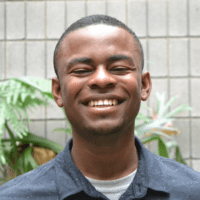
“Examining the transcriptomal regulators of arbuscule development”
Project Summary:
Many soils are low in phosphorus content and require fertilizer use for farming to be successful. Unfortunately, excessive fertilizer use has negative economic and ecological effects – being a finite resource, not remaining very long in soil, and having the potential to run off and harm adjacent environments. We studied arbuscular mycorrhizal symbiosis, an endosymbiosis between the legume Medicago truncatula and Glomeromycota fungi. In this relationship, the plant provides the fungi with carbon in exchange for phosphorus. This association has been shown to positively impact the growth of the plants involved and could potentially lead to the decreased use of fertilizers.
Our project examined one of the major symbiotic transcription factors, IPD3. It was recently found that M. truncatula possesses two copies of the gene, IPD3A and IPD3B. Our work employed the yeast two hybrid approach to explore the two genes’ interactions with other transcription factors and to compare the two with each other. Furthermore, we set up a phosphate, growth response, and root architecture experiment to gain additional insight of the differences between the wildtype and IPD3 mutant variations of M. truncatula. The ultimate goal was to gain a better understanding of the mechanisms that play a role in AM symbiosis so that we can better employ the nutrient-capturing abilities of AM fungi. Further research into AM symbiosis could prove fruitful as the association has the potential to impact ecosystems’ carbon cycle and productivity.
My Experience:
My time here at Boyce Thompson Institute has been extremely rewarding. Getting to know some of the other interns has helped me build connections that I know will last indefinitely. The same can be said about the Harrison lab which was more than welcoming and fostered a family-like community. I was able to draw from everyone in the lab, everybody offering something different, allowing me to build upon my molecular biology and practical skills.
I am more than grateful for my mentor for being so patient and willing to offer her insight whenever needed. Getting to learn the yeast two hybrid system was one of my favorite parts of this experience, knowing that it is a useful technique out in the world of science. Leaving here, I feel more confident in myself and in my decision to pursue a graduate degree. Any undergraduate should take advantage of this program if given the opportunity!
